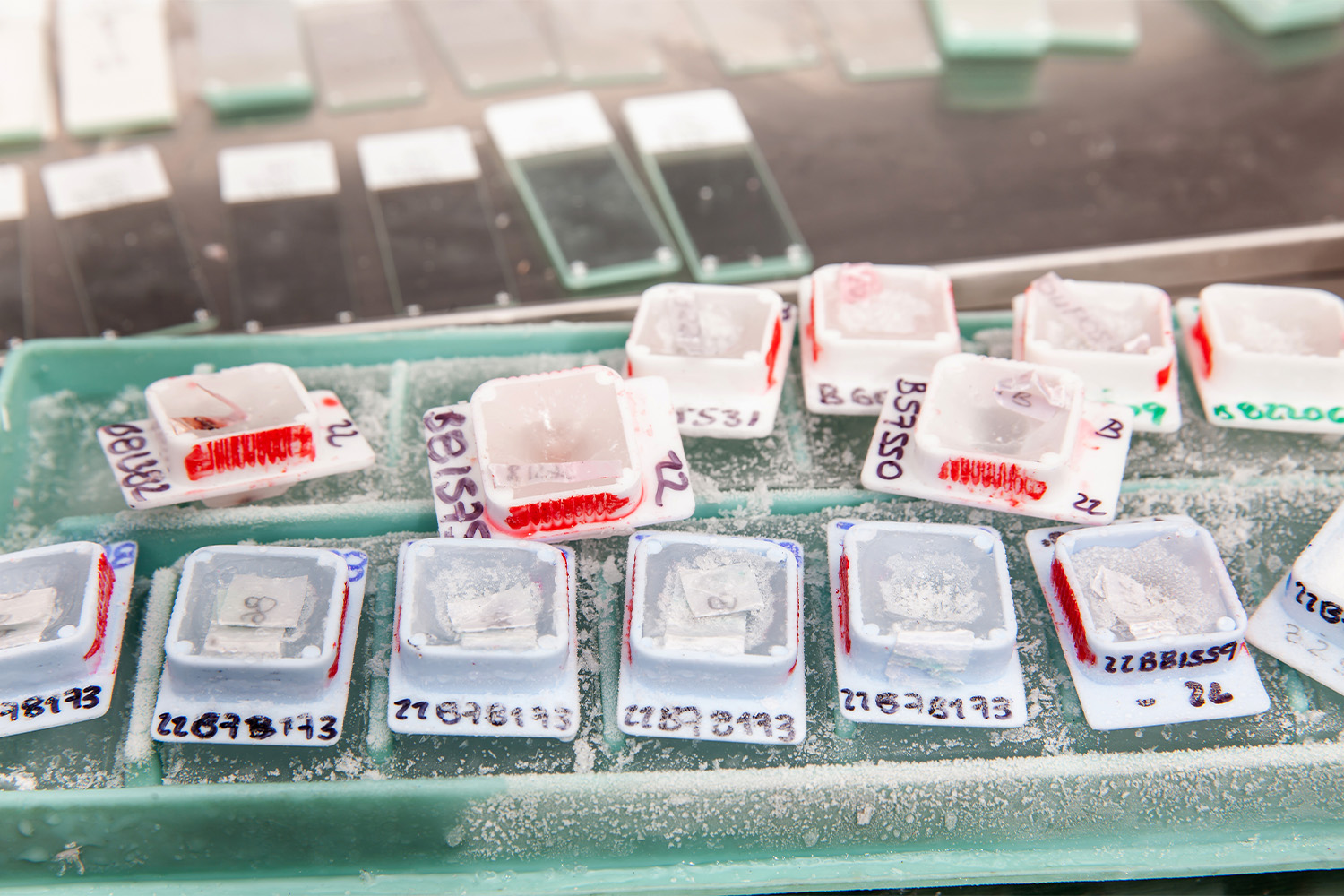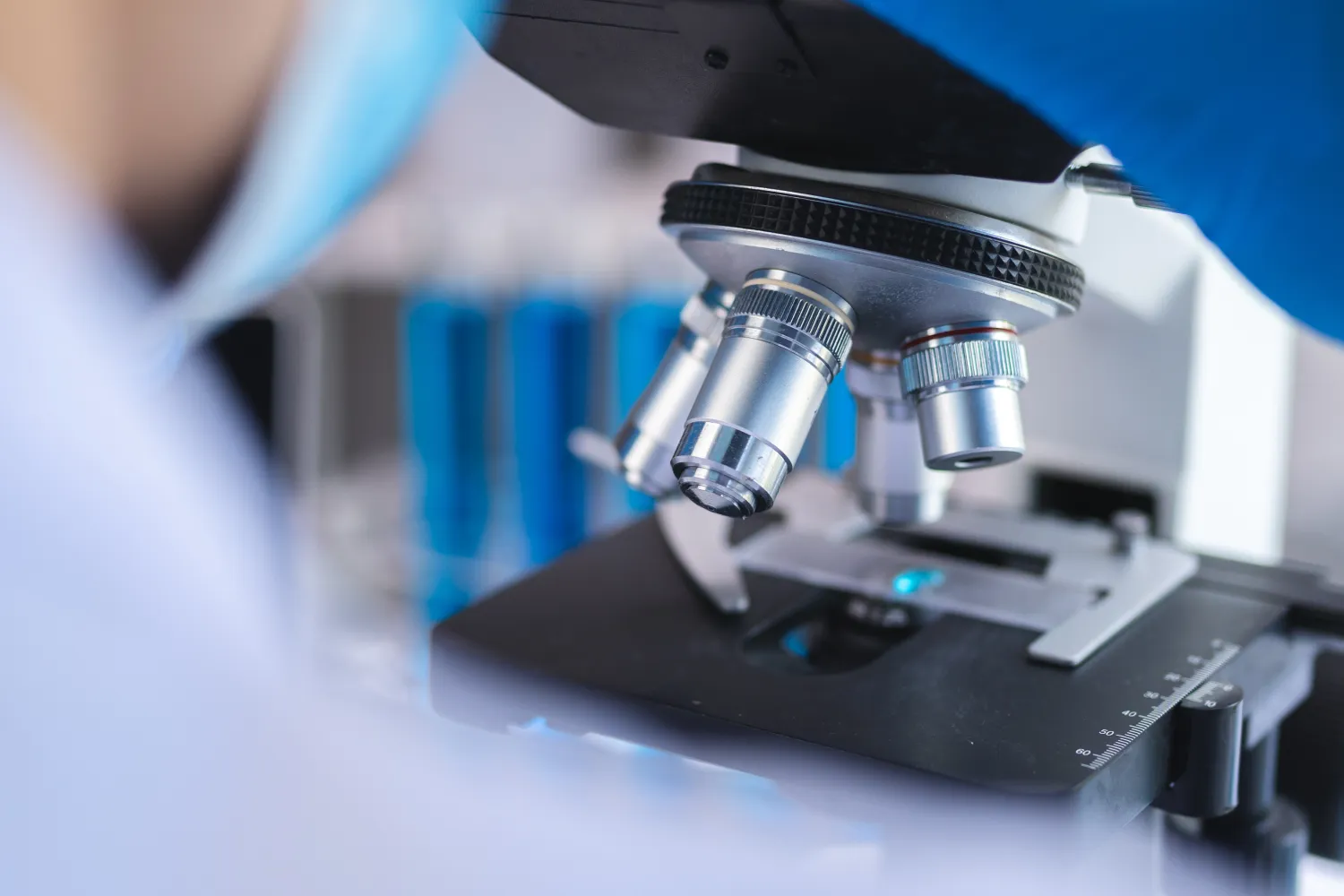Reviewed by | Melinda Hany, Registered Nurse
Tissue samples comprise an essential resource of biological material for medical research. Samples can be obtained from both humans and animals, and they can be derived from many different tissue types such as tumors, blood, or internal organs.
Additionally, these tissue samples can be prepared in different ways such as with the formalin-fixed, paraffin-embedded (FFPE) method or through cryopreservation (fresh frozen).
Knowing when to use either FFPE or fresh frozen samples can make a critical difference in any research endeavor. The decision can be based on the type of tissue, the research focus, or other research-related logistical restrictions.
What are the differences between FFPE and frozen tissue samples? And when should we use each? Below we will discuss key similarities and differences, as well as common practical applications for each.
What Is FFPE Tissue?
Formalin-fixed, paraffin-embedded tissue, like its name suggests, is a tissue sample that has been preserved via a process that utilizes formalin, or formaldehyde, to preserve the tissue in its biological form prior to embedding in a highly stable paraffin wax.
Initially, a tissue type suitable for FFPE preservation is selected. These tissues can be donated or collected as part of a patient’s biopsy, such as when a patient with cancer elects to biopsy a tumor. Once the fresh tissues are collected, they are exposed to a formalin solution that cross-links protein structures and effectively halts any naturally occurring biological processes as well as decay.
After formalin preservation, the tissues are dehydrated with an alcohol solution prior to being exposed to paraffin wax. The wax helps to encase the tissue and protect it from physical environmental degradation due to factors such as light, temperature, and touch.
At this point, the tissue can be cross-sectioned into familiar tissue “slides” for examination under a microscope.
When Is FFPE Tissue Used?
FFPE tissue samples have many advantages over fresh frozen tissue samples.
FFPE samples are easier to obtain, faster to process, more affordable, and much more stable than fresh frozen samples. They are also better suited for analyzing cellular structures and molecules that have been modified post-mortem, and they are often the best option for examining molecular changes that occur over time, such as in oncology.
This makes them an ideal choice for studies looking to identify molecular markers of disease and drug response.
Research
One of the largest areas of FFPE application is oncology. A biopsy is often used to stage and characterize various types of cancers, allowing researchers and clinicians to observe the tissue samples under microscopy and gain insight into the pathology.
FFPE tissues are ideal for this purpose, as they are more stable than fresh tissues and retain their structural integrity and biomarkers for a long period of time.
Immunohistochemistry (IHC) is a common laboratory technique overtly useful in oncology that can be used with FFPE tissue samples. This technique uses antibodies to detect and measure specific molecules, such as proteins, in the tissue sample. IHC is used in cancer research to identify biomarkers that can be used to identify and diagnose tumors. Additionally, it can be used to study the effects of various drugs on targeted proteins in the tissue sample.
Ultimately, cancer research utilizing FFPE depends upon the identification of cellular structures as well as the presence or absence of immunological cell features that can serve as drug targets for immunochemotherapy agents.This is especially important for drug development, as it allows researchers to identify and explore new targets for novel therapeutics.
FFPE samples have also been used to study epigenetic modifications and to identify gene expression patterns that can be used to understand the mechanisms underlying the development and progression of cancer. However, due to the degradation of DNA in FFPE tissue, the results obtained from such studies may not always be reliable.
Logistics
FFPE tissue samples have the advantage of being easier to store and manage than fresh frozen samples. This is due to their ability to withstand higher temperatures and survive for longer periods of time, making them ideal for long-term storage.
Furthermore, FFPE samples can also be used for multiple experiments and testing, as they remain intact even after being processed multiple times.
Additionally, FFPE samples are also much easier to transport than fresh frozen samples because they don’t have to be shipped in a strict, temperature-controlled environment. The lower cost of storage and handling associated with FFPE samples makes them attractive for projects with limited budgets or short timelines.
Finally, FFPE tissues can often be amassed in great quantities. In studies looking at patterns of overall tissue features or characteristics, it is much more feasible to obtain FFPE tissues in quantities large enough to draw conclusions about the population instead of a select few frozen tissue samples.
Biobanks and biorepositories are available internationally to source a wide variety of FFPE tissue samples from numerous patient demographics to get a more representative picture of population health.
What Are Frozen Tissue Samples?
FFPE tissue samples have traditionally been the gold standard for clinical research, but frozen tissues are becoming more popular due to the advantages they bring for researchers.
Frozen tissues enable researchers to access and analyze genetic material in its purest form, providing more accurate results than those obtained from FFPE tissue samples.
DNA and RNA information is generally preserved in fresh frozen tissue samples with higher quality compared to FFPE tissues due to the FFPE preservation process.
Fresh frozen samples are, however, more difficult to obtain and process than FFPE tissues, making them a less attractive option for many clinical researchers.
When Is Frozen Tissue Used?
Fresh frozen tissue samples provide a viable alternative to using FFPE tissue samples for clinical research. Fresh frozen samples are preferred when researchers are looking to reliably extract information from biomolecules such as proteins, RNA, and DNA. Compared to FFPE tissues, the process of freezing frozen tissue is simpler compared to exposing the tissues to toxic chemicals through multiple preservation steps.
While there are many advantages of using FFPE samples, FFPE tissues may simply not be the right tissue material for a particular study.
Some studies depend on the observation of natural physiology or cell degradation in real-time, and for these purposes, frozen tissue samples are essential.
Molecular analysis and native morphology studies are also notoriously dependent on using frozen tissues over FFPE tissue samples.
Fresh frozen tissue samples are often used in research laboratories wanting to observe the biological processes of proteins, nucleic acids, and cellular components. Specifically, regarding cellular protein function in FFPE tissue samples, there is concern that the proteins have become denatured during the preservation process by the formaldehyde and ethyl alcohol exposure. This can be concerning because it can lead to proteins not binding to the same antibodies that they would in their natural, living biological environment.
Because of this, fresh frozen tissue samples have become a preferred method for preserving tissue for functional research purposes as it allows for the true expression of proteins and other components.
Other analysis methods used during research are notoriously better served using frozen tissues over FFPE such asmass spectrometry and western blot assays. With FFPE, some tests contain numerous artifacts that must be accounted for during the interpretation of test results leading some researchers to depend more on frozen tissues for highly sensitive research goals.
Conclusion
While there are certainly advantages and disadvantages to using both FFPE and frozen tissues in clinical research, they each exist simultaneously and work well to complement each other.
Trends are emerging in research as to what method researchers prefer, but there is a place for both in many research studies.
The affordability and convenience of FFPE tissues results in the method maintaining substantial popularity in research that requires numerous different tissue samples to be analyzed over an extended period or in large quantities.
The availability of FFPE tissue in large biobanks and biorepositories makes it easy to obtain the right tissue for many clinical studies.
On the other hand, there is a place for frozen tissue in research. Frozen tissue retains many of the cellular and biological characteristics that can be lost in the FFPE preservation process, as well as the ability to rapidly analyze tissue samples in real time without having to wait for the FFPE preservation process which can take a lot of time.
Using iProcess To Obtain Tissue Samples
With such a fine balance in choosing the right tissue sample for your research study, iProcess Global Research has the experience and expertise to facilitate obtaining even the most difficult-to-find tissue samples.
As a global leader in supplying biospecimens, iProcess can provide clients with a wide variety of tissue samples for any research endeavor.
Sources:
Fresh Frozen Versus Formalin-Fixed Paraffin Embedded for Mass Spectrometry Imaging | PMC




